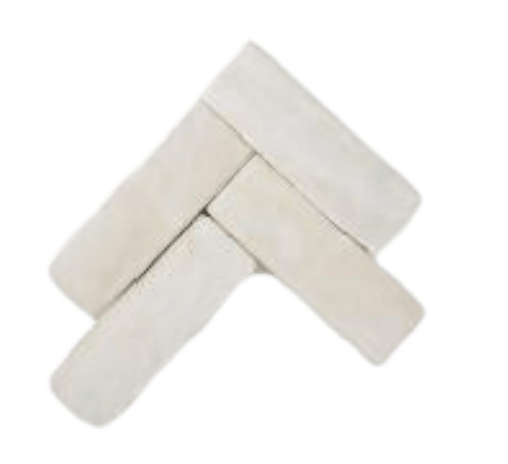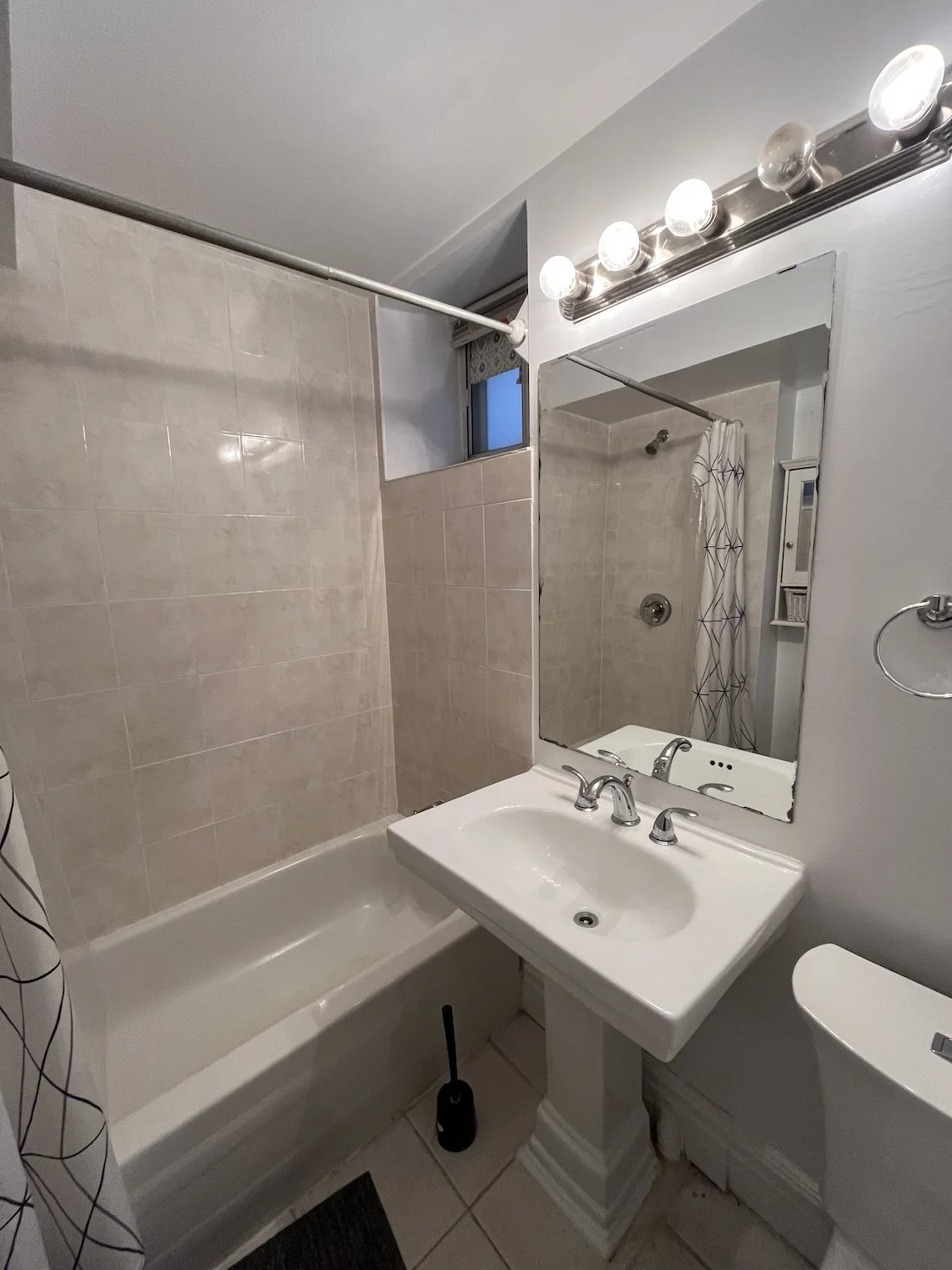All About Tile: How We Transformed Four Unique Bathrooms
Every project we take on our Toronto interior design firm, is a careful exercise in design - where every choice, no matter how small, is intentional.
"Design" is a broad term, but at its core, it’s about crafting a space where all the pieces work seamlessly together.
When our longtime clients called us back for a refresh of their bathrooms (and more), we knew their style well: sophisticated, neutral, and that perfect balance between traditional and contemporary. With that in mind, we leaned heavily on texture and pattern to add depth and personality - primarily through the tiles. It’s this kind of layered, personalized approach that defines our custom interior design work.
Here’s how we made each space shine!
Primary Bathroom Design: A Textural Triumph
Let’s start with the biggest challenge: the primary ensuite. We sourced stunning handmade zellige tiles in a classic brick shape and wanted to install them in a unique pattern. Our initial vision? A dynamic hatch pattern, grouping three tiles by three tiles.
But here’s the twist - because these tiles are handmade, they naturally vary in size, and our tiler wasn’t confident the pattern would translate smoothly in real life. Rather than force it, we pivoted, experimenting with different layouts until we landed on a solution that preserved all the texture and interest we loved, just in a slightly different way.
Sometimes, the best designs come from a willingness to adapt, and this space proves it!
A behind-the-scenes look at the layout for the primary ensuite, showing how we mapped out the tile, vanity, and all the little design details.
Kids' Shared Bath: Custom Tile Work with a Classic Twist
For this true Jack-and-Jill bathroom - shared between a son and a daughter - we wanted a design that felt timeless yet playful, without breaking the budget. The solution? A fresh take on the ever-classic subway tile.
Instead of a standard installation, we introduced a stripe detail using a soft blue-green trim piece, which added just the right amount of fun and tied perfectly into the floor - a gorgeous ming green marble hexagon.
This space is a perfect example of how balancing high-end interior design and budget-friendly elements can create a space that feels unique and elevated.
Basement Bathroom Design: Playing with Pattern
The basement bathroom may be a low-traffic space, but that didn’t mean we were going to overlook it! Since we weren’t changing the layout, we focused on making a design impact with the tile.
We chose a porcelain tile in two tones and used them to create a checkerboard pattern - fun, fresh, and visually dynamic without being overwhelming.
This was one of those projects where a simple design tweak made all the difference. By mixing two colours instead of introducing a more expensive tile, we kept costs down while dramatically elevating the look. Smart design wins again!
Before: The original basement bathroom was dated and utilitarian, with no real design impact - just basic finishes that blended into the background.
After: With a smart tile swap, we brought this space to life using a playful checkerboard pattern in two-tone porcelain tile - high-impact, and full of personality.
Laundry Room Tile Strategy : A High-End Look that Doesn’t Break the Bank
Last but not least - the laundry room. This space is a great example of how a little creative problem-solving can go a long way. We found a beautiful tile on clearance (yay for budget wins!), but there was a catch - we didn’t have enough black tiles to complete our planned pattern across the whole floor.
Instead of scrapping the design, we got inventive. By using white tiles around the border - an area that would sit under cabinetry and never be seen - we stretched our materials without compromising the final look.
The result? A timeless, high-impact space that didn’t break the bank.
Why Tile Matters in Interior Design
Tile isn’t just a practical necessity in water-prone spaces - it’s an opportunity to elevate your design. With the right mix of colour, pattern, grout, and installation techniques, tile can completely transform a space, adding depth, personality, and impact.
These bathrooms and the laundry room showcase how thoughtful choices and creative problem-solving can result in a space that reflects the heart of high-end residential design.










